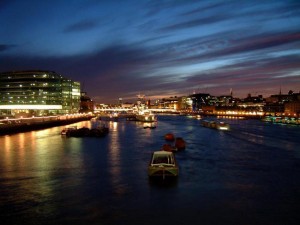
The 10 rivers in the UK that have shown the most progress when it comes to environment have been revealed by the government. They have turned from the definition of pollution to beautiful parts of nature and wildlife.
The river Taff, in Wales, was once so much polluted by coal, that it was black. Today it’s the site of many international fishing tournaments. And the Thames, who 60 years ago was said to be devoid of all life, is bringing wildlife back in London.
EA (the Environmental Agency) are urging people to go witness the huge improvement. They say that many have helped that happen – projects for improving habitat, better legislation on pollution and farmers, businesses, water companies too.
The EA have spent around £18 million this year on new projects. However, it seems that their work is still not over.
The ten most improved rivers are:
Wandle. It’s in London, and 50 years ago was used mainly as a sewer, but today it’s one of the best places for fishing in the country.
Thames. Its transformation has been so shocking that it won the International Theiss Riverprize last year. What was once considered a national disgrace is today the home of salmon, otters and sea trout.
Wear, in the Durham County. Together with its neighbour Tyne, it’s one of the top rivers with salmon in the country.
Stour, in Worcestershire. It was once used as a dumping site for carpet dyes and looked as a rainbow. Today, in the heart of the carpet manufacture in Kidderminster, otters have been spotted.
Darent, in Kent. It was once almost wasted by water extraction, but now it’s fully recovered and has lots of brown trout.
Dee, which flows through Wales and England, may pass through Britain’s most famous countryside, but also gathers lots of pollution on its way. That was regulated, though, and now its inhabitants include waders and water fowls.
Nar in Norfolk is one of the protected fenland chalk streams, but it was used as an agricultural drain and that drove away most wildlife. Today, it has returned, including otters, kingfishers, and a rare breed of sea trout.
Taff, in Wales, used to be the victim of the mining industry and sheltered no life, until recently. The pollution controlled, fish has returned and the river even hosts some interesting fishing competitions.
Stour, in Dorset, has a huge historical significance. Its oldest mill has been restored, and the river has become a refuge for wildlife.
The Mersey Basin also suffered the industry age and was called the most polluted river in Europe. The funds for its clean up have been more than £1billion, but it was worth it as today it’s the home of salmon, trout, eels and otters once more.
